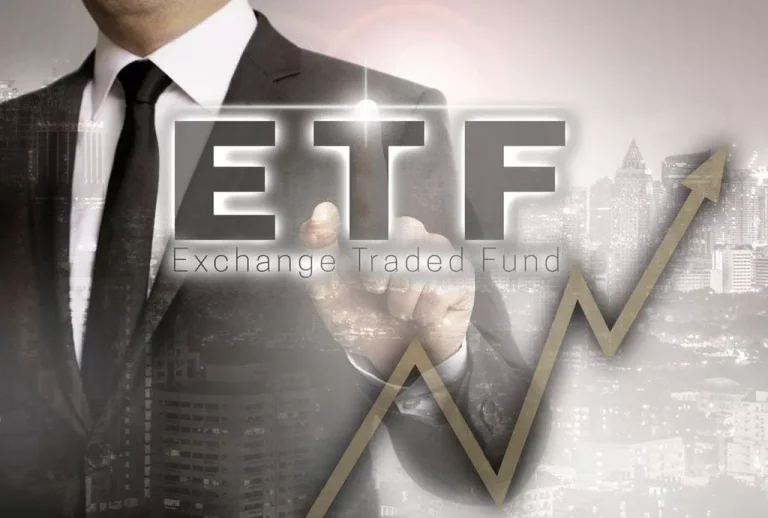Solana is comparatively new to the cryptocurrency market, and its market cap is about $4 billion. Ethereum is the second-most-popular cryptocurrency out there (behind Bitcoin), with a market cap of about $143 billion. Peter has been overlaying the cryptocurrency and blockchain house since 2017, when he first found Bitcoin and Ethereum. Peter’s major crypto interests are censorship-resistance, privateness what is solana crypto and zero-knowledge tech, although he covers a broad vary of crypto-related topics.
Solana Centralization Concerns?
In comparability, Solana’s concentrate on pace and scalability units it other than Ethereum, which has confronted challenges with network congestion and excessive fuel charges throughout peak usage. Originally, Ethereum was designed to run utilizing a proof-of-work — or PoW — consensus mechanism, where every transaction on the blockchain is validated through cryptocurrency mining. PoW protocol helps the blockchain remain decentralized and safe, but it has been largely criticized for its sluggish transaction pace and the huge quantity of power it consumes.
What Are The Environmental Impact Concerns For Solana And Ethereum?

Solana’s unique Proof-of-History (PoH) consensus mechanism, combined with Proof-of-Stake validation, permits it to process significantly extra transactions per second than Ethereum. Recognizing limitations in Bitcoin’s functionality, Buterin envisioned a blockchain platform able to transferring value, executing code, and powering decentralized applications (dApps). This article won’t try to settle the age-old debate surrounding which project must be crowned the king of smart-contract cryptocurrencies.

Ethereum’s Smart Contract Capabilities
Since Solana users aren’t competing for block area to process transactions, their common payment per transaction is typically a small fraction of a penny. Ethereum has a more active development group, bigger DeFi protocols, tokens with larger market capitalizations and extra useful NFT collections. Meanwhile, good contracts in Solana are written within the Rust, C and C++ programming languages, that are mature programming languages that many builders are already carefully acquainted with. Solana and Ethereum are among the most necessary blockchain tasks available on the market today, and are the go-to platforms for anybody who’s trying to construct or use decentralized purposes. Stakers in the Solana network are rewarded with SOL, and it’s used to pay for transaction charges.
Understanding Solana And Ethereum
They are constructing a picture that appeals to the corporate world, which is great for funding and bringing new customers in. Naturally, that looks worrisome, however bear in mind these two years overlap with a pretty vicious bear market that took virtually each cryptoasset down. In essence, this boils down to a easy story of youth vs legacy– a story that crypto holders are all tremendously acquainted.
In 2014, a crowdfunding campaign raised over $18 million to develop the Ethereum platform. Dive deeper into Solana and Ethereum updates, be part of group discussions, and test out functionalities firsthand to know their full potential. Your journey into the world of blockchain is just beginning—embrace the journey and let your curiosity information you in the path of new horizons. In terms of decentralization, Ethereum’s large user base contributes significantly to maintaining a decentralized setting regardless of facing scalability hurdles.

What’s Tokenomics? A Information To Crypto Economics
Solana uses Sealevel, a system that allows sensible contracts to run side by aspect without causing any disruptions. This provides Solana a significant benefit by method of efficiency levels in the Network. Ethereum Network provides the true instance of stateful structure by recording all the transactions on the Network in the current state. When a new transaction occurs, the complete Network should replace its copies of the transaction to reflect the current transaction. Naturally, the constant replace takes time and vitality and is partially answerable for the congestion plaguing Ethereum.
However, their underlying assets, ETH and SOL have also gained a powerful following. Conversely, the decentralization of a PoS blockchain, like Solana, is dependent upon how staked cash are distributed across all validators within the network. If a big percentage of coins staked are held by a small variety of validators, the network shall be more centralized. Ethereum has loved a first-mover advantage since its launch in 2015; nevertheless, its lack of ability to scale has allowed other layer-1 blockchains, such as Solana, to seize market share all through 2021.
Each highly effective network has its personal set of benefits and disadvantages that buyers, companies and builders all must think about earlier than embarking on their unique journeys into the exciting world of DeFi. Following the profitable launch of Spot Bitcoin ETFs, Ethereum ETFs have recently gained traction, providing traders with a regulated approach to gain publicity to ETH with out directly holding the cryptocurrency. Several Ethereum ETFs have been launched in varied jurisdictions, including the United States. This probably displays and growing regulatory acceptance and demand for such investment vehicles, although some preliminary reports say the demand hasn’t been fairly as high as that of Bitcoin. Compared to Ethereum, which has a massive quantity of nodes distributed worldwide, Solana validators are a lot fewer in quantity. Centralization can pose sure dangers, corresponding to potential validator collusion and censorship, elevated vulnerability to coordinated attacks, and reduced community resilience.
Ethereum smart contracts are written in a custom programming language called Solidity, which is influenced by well-liked programming languages corresponding to C++, Python and JavaScript. Due to the recognition of Ethereum, Solidity has turn out to be a nicely established language for good contract improvement and there could be a sturdy ecosystem of improvement instruments particularly designed for it. While both platforms aim to supply decentralized solutions, they diverge significantly by way of technology, velocity, prices, and strategy. As we delve deeper, understanding these distinctions is important for builders, investors, and anybody keen about the means forward for crypto. Ethereum’s transition to Ethereum 2.zero, centralization concerns on Solana, and regulatory challenges within the crypto area are all significant points that the blockchain and cryptocurrency industries should handle. Finding solutions to these challenges will be essential for the continued growth and adoption of blockchain know-how and cryptocurrencies in the years to come.

Users usually recognize the affordability of conducting transactions on Solana as opposed to Ethereum’s typically costly fee construction. The difference in fees between the two platforms can significantly impact frequent traders or these concerned in varied decentralized functions (cases) the place price efficiency plays a vital role. Solana’s distinctive Proof of History consensus mechanism permits it to achieve exceptional scalability by processing hundreds of transactions per second efficiently. This characteristic sets Solana aside from Ethereum when it comes to dealing with large volumes of transactions swiftly without experiencing vital delays or inflated transaction costs. On the opposite hand, Solana makes use of a singular approach known as Proof of History combined with Proof of Stake consensus mechanism, allowing for high throughput without compromising decentralization or safety. This revolutionary design allows Solana to process hundreds of transactions per second at a fraction of the cost in comparability with Ethereum.
This in depth ecosystem provides a robust foundation for progress potential and innovation throughout the blockchain industry. Developers worldwide proceed to build on Ethereum due to its robust infrastructure and developer-friendly surroundings. Solana’s architecture allows it to handle a better throughput in comparability with Ethereum, resulting in quicker transaction speeds general.
The platform’s introduction of blockchain-based smart contract expertise marked a pivotal second within the digital realm. Smart contracts on Ethereum are autonomous contracts with their phrases directly encoded into strains of code, able to self-execution and enforcement primarily based on agreed-upon conditions. These embody the use of sidechains, off-chain, and zero-knowledge technologies operating on prime of the Ethereum mainchain. However, most layer-2 protocols are external enhancements to Ethereum by third-party tasks and developers.
Its unique design, primarily based on proof-of-work (PoW) consensus, has led to limitations in transaction throughput and excessive charges during periods of excessive demand. The Ethereum network’s capacity has typically been strained, resulting in congestion and slower confirmation instances. One of the key advantages of Ethereum is its established presence and widespread adoption throughout varied decentralized purposes (dApps).
- Dive deeper into Solana and Ethereum updates, be a part of group discussions, and check out functionalities firsthand to understand their full potential.
- Compared to Ethereum, which has numerous nodes distributed worldwide, Solana validators are a lot fewer in number.
- Of course it’s worth noting that this partnership with Ethereum already exists, as most popular stablecoins are hosted atop the Ether community.
- During instances of network congestion, gas charges can skyrocket, making transactions expensive.
It also burns transaction fees at an outlined rate of 50%, with the remainder allocated to the validator processing the transaction. As the second most-popular cryptocurrency, Ethereum faces competitors amongst customers because of its restricted capacity for handling transactions. If too many customers try to push a transaction by way of on the identical time, it bogs down the system and leads to slower transaction instances and higher charges per transaction. The average price per transaction is rather less than $1, but traditionally it has been as high as $70. Solana is prepared to process transactions faster with the know-how it uses, so costs per transaction have been constantly low. Under Ethereum’s proof-of-work mechanism, transaction costs can rise as users compete for blockspace to validate transactions.

Read more about https://www.xcritical.in/ here.

No comment yet, add your voice below!